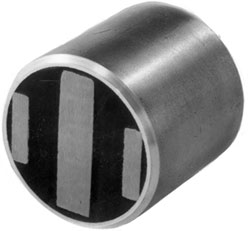
Poles play an important role in the attractive properties of magnets. Regardless of the material, all magnets have two poles. Even the Earth, in fact, has a pair of poles: the north and south poles.
Overview of Magnetic Poles
Magnetic poles are sections on a magnet where the magnetic field is the strongest. They are found on opposite ends. The north pole is found on one end of a magnet, whereas the south pole is found on the opposite end.
Magnetic Poles and Attraction
The attractive properties of magnets can be attributed to their poles. When you place a pole of one magnet near the opposite pole of a different magnet, attraction will occur. The two poles will pull together, assuming they are opposites (e.g. north pole and south pole).
Two magnets, however, will only pull together if their poles are oppositely aligned. The north pole is also known as the “south-seeking pole” because it attracts the south pole of other magnets. The south pole, on the other hand, is also known as the “north-seeking pole” because it attracts the north pole of other magnets. If you place the north pole of a magnet near the north pole of another magnet, the two magnets will attempt to push away from each other.
What Happens to the Magnetic Poles When You Break a Magnet?
Some people assume that breaking a magnet in half will separate its poles, with one piece retaining the north pole and the other piece retaining the south pole. But this isn’t the case, as all magnets have two poles.
If you break a magnet, you’ll essentially create new poles. Each piece of the magnet will have its own pair of poles. This principle is referred to as “monopole magnetism,” meaning isolated north or south poles do not exist naturally. Even when broken or cut into smaller pieces, all magnets have two poles by default.
Do Temporary Magnets Have Poles?
Magnetic poles aren’t exclusive to permanent magnets; temporary magnets have a north and south pole as well.
Temporary magnets are distinguished from permanent magnets by their ability to turn and off. Electromagnts, for instance, rely on an electrical current to generate a magnetic field. Electromagnets have a north and south pole just like their permanent counterparts. The position of an electromagnet’s north and south pole, though, can be controlled via the direction of the electrical current. Changing the direction in which the electrical current travels through the electromagnet will change the position of the poles.
